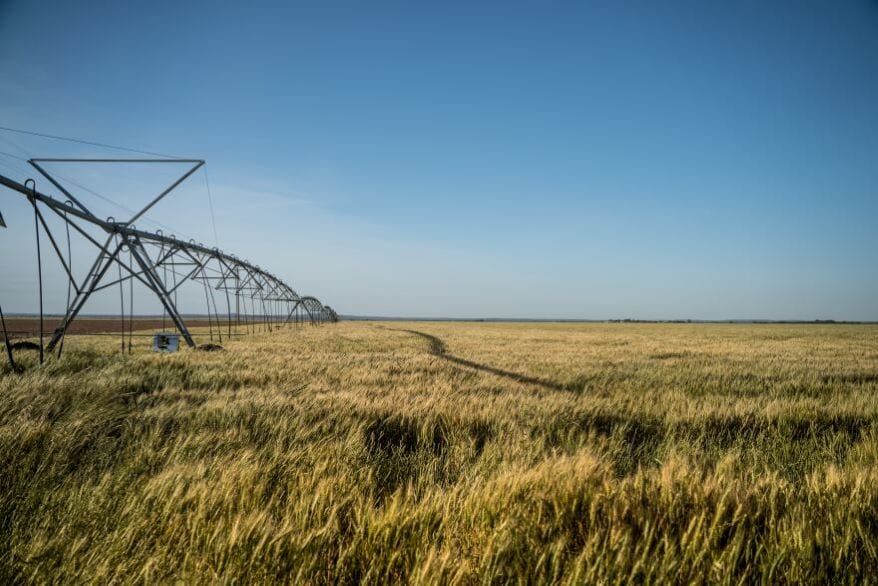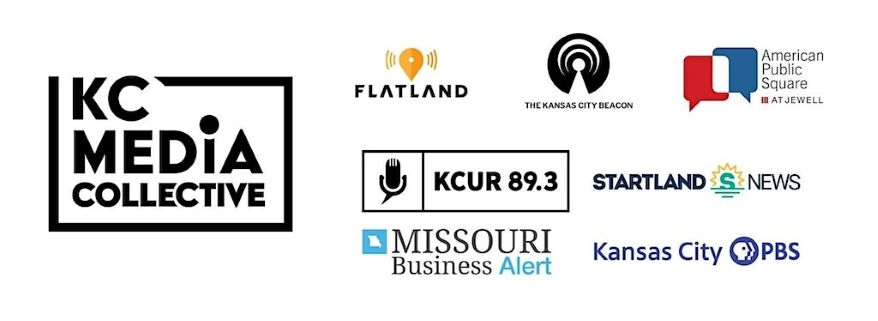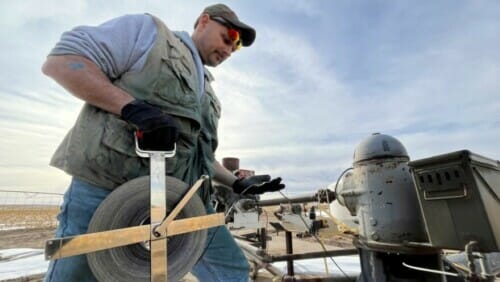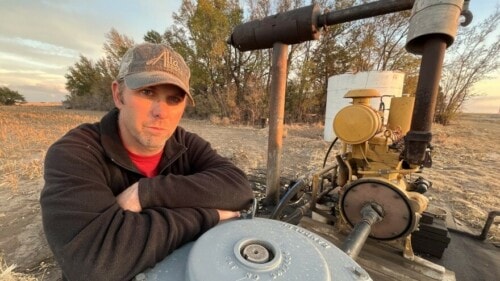As Ogallala Aquifer Declines in the Great Plains, States Weigh Metering Irrigation Wells About a quarter of the United States’s irrigated cropland sits on top of the Ogallala Aquifer in the Great Plains. But water levels are dropping, and states are taking different approaches to monitoring how much groundwater irrigators are pumping out.
Published October 17th, 2023 at 10:19 AM
Above image credit: In the Oklahoma panhandle, Guymon residents rely on the Ogallala for drinking water. (Courtesy | City of Guymon)Mike Shannon first learned about the Ogallala Aquifer because he made a costly mistake.
In the mid-1980s, Shannon was new to city government when one of his hometown’s wells started to go dry.
“I just assumed, maybe I ought to go somewhere else and stick another hole in the ground and we’ll get more water,” Shannon said. “Well, unfortunately, I stuck a hole in the ground and there was no water there.”
He’d spent several thousand dollars on a test well that was bone dry, and he had to answer to his constituents for it.
Today, Shannon is still thinking about groundwater as the interim city manager for Guymon, the Oklahoma panhandle’s largest city.
In the decades since his mistake, well drilling prices have gone up. So has the risk of coming up dry.

Trouble in the Ogallala
The Ogallala Aquifer lies under eight states in the Great Plains. The bulk of it is under Kansas and Nebraska, plus the Oklahoma and Texas panhandles.
“Back then, I just thought there was a great big ocean underneath,” Shannon said. “And it’s not a big old ocean. It’s a sand gravel formation that was made millions of years ago from the Rocky Mountains.”
That sandy formation has held water for all that time. But the aquifer is being depleted — by cities like Guymon, whose residents need the water for drinking and cleaning and bathing. Farmers are also sucking up water to irrigate their crops or keep their livestock hydrated. Businesses and private well owners also have their own specific water needs.
In most areas, new water isn’t taking the place of what’s pumped out of the Ogallala. Between 1950 and 2013, the water levels dropped over 250 feet in an Ogallala well near Lubbock, Texas. The aquifer has seen more moderate declines elsewhere, but it’s causing problems for cities, well owners and irrigators alike.
Oklahoma only permits its irrigators enough groundwater to cover each acre of their land with 2 feet of water per year. But it’s an honor system — irrigators aren’t required to meter their usage. Kansas uses a similar system — irrigators report their usage by filling out a form every year.
“They know in the panhandle region it takes 4, maybe 5 acre-feet to grow corn,” Shannon said. “They know that. But they still allow the farmer to report they used 2 acre-feet. Until they prove me wrong, I’ll keep saying it.”

Shannon acknowledged it’s a tricky problem. Even if corn producers are using more than their allotted water, it’s not for nefarious purposes — it’s to grow a vital product that’s a big part of livestock feed, food and fuel in the U.S.
“We’re all taking this water out of the ground for very beneficial uses, and to their benefit is raising crops for the world,” Shannon said. “My benefit is giving it to the citizens of Guymon to survive. But it comes back to being very conservation minded.”
Local Control
Below much of Nebraska, the Ogallala’s water levels have held steady or even increased in the last decade. Some of that is due to geological and climatological happenstance — Nebraska sits on a thicker part of the reservoir, so there was more water to begin with. But the state also has local water districts that often enforce irrigation limits
Nebraska’s twenty-three Natural Resource Districts are based on the state’s watersheds. Each district has its own groundwater usage regulations and metering requirements based on local needs and conditions.
“What’s benefited us is all those decisions are made locally,” said Dustin Wilcox with the Nebraska Association of Resources Districts Office. “So it wasn’t the state or any one entity saying we had to have meters statewide. It’s been a process of establishing those in only areas where they’re where they’re needed.”
Those districts were established in 1972, and they started developing plans to manage groundwater quantity and quality in the 1980s.
“We’ve had a really long, slow, gradual process where we can ramp up to doing some of these meters,” said Katie Pekarek, an Extension educator with the University of Nebraska-Lincoln.
Wilcox said the metering and permitting systems used across the state don’t just protect the future of Nebraska’s groundwater. They also safeguard present users who could be impacted by overburdening the aquifer.
Nebraska may have deeper water reserves than neighboring states, but people are still worried. Lincoln, the state’s capital, projects it will need a second water source to supplement the Ogallala by 2048.
Aaron Young runs the state’s groundwater monitoring program through the University of Nebraska—Lincoln. He said he has seen wells in Nebraska run dry, mostly about a decade ago during a prolonged drought.
“It does happen, but it’s not happening anywhere near the level that they are seeing in Kansas or Oklahoma,” he said. “It’s more of the irrigation wells that are on the edges of aquifers or are not constructed correctly for the location that they’re in — they’re generally the ones that have problems.”
Moving Toward Metering?
Back in Oklahoma, opinions on metering groundwater usage have begun to shift.
“If I would’ve said that I wish the farmers would have put meters on ten years ago, I would have probably been asked to leave Oklahoma,” Shannon said. “I’m saying it more now, and farmers are going, ‘Yeah, you’re right.’”
As the Oklahoma Water Resources Board prepares a new comprehensive water plan for 2025, it’s hosted public discussions across the state. Metering has come up, and it’s not just municipal water managers like Shannon who are advocating for it. It’s also producers who need to know they’ll have enough water for future crops.
This new willingness to consider metering is also reflected in the state legislature.
“My concern is that we need to be better stewards of our water,” said Rep. Carl Newton, a Republican whose district covers a large swathe of northeastern Oklahoma. “I need to know if we need to look at metering it.”
Newton is spearheading a legislative interim study to investigate Oklahoma’s groundwater availability and usage. The study also looks into possible solutions to the state’s dwindling groundwater stores, like metering irrigation wells or artificially recharging the Ogallala.
Newton said he’s heard that one particular Oklahoma lake sends enough excess water over its dam every year to recharge the state’s portion of the aquifer. If the state could use injection wells to get that water into the aquifer, it wouldn’t evaporate or flow away downhill.

“We’re talking about billions and billions of dollars to get that water from northeast Oklahoma all the way back over here,” Newton said. “But it could make a huge difference.”
It’s not unheard of — California recharges some aquifers to keep adequate groundwater stores. And just east of the Ogallala, a city in Newton’s district started constructing a pipeline from a lake 70 miles away when its groundwater wells stopped keeping pace with its need.
Newton said constituents are bringing up the more affordable idea of metering, especially during the recent years-long drought.
“They were seeing these irrigators keep irrigating and they had puddles of water out there,” Newton said. “We had some residential places that were unable to get water because their pumps weren’t deep enough in the aquifer to pull water.”
Metering isn’t the only solution. Producers can also implement their own steps to minimize their water use, like soil moisture monitoring. The Oklahoma Conservation Commission offers a Master Irrigator program to encourage conservation and efficiency.
Young says producers who opt to learn about and implement conservation practices have done a lot for Nebraska too.
“I go to a producer and they have a really amazing knowledge of groundwater and what that groundwater can do for them and that it does need to be conserved,” he said. “I think that’s something that other parts of the country don’t necessarily have, and it really works to our advantage “
In Oklahoma, Newton knows that whatever actions are required to conserve water need to happen before it’s too late.
“I think we need to be moving proactively rather than waiting to be reactive,” Newton said. “Waiting until everybody says, ‘Well, we’re out of water. What are we going to do?’”
Graycen Wheeler is a reporter covering water issues at KOSU. She joined KOSU in June 2022 as a corps member with Report for America, a GroundTruth initiative that places emerging journalists in newsrooms across the country. This story was produced in partnership with Harvest Public Media, a collaboration of public media newsrooms in the Midwest that reports on food systems, agriculture and rural issues, and appeared on KCUR 89.3, a member of the KC Media Collective.





